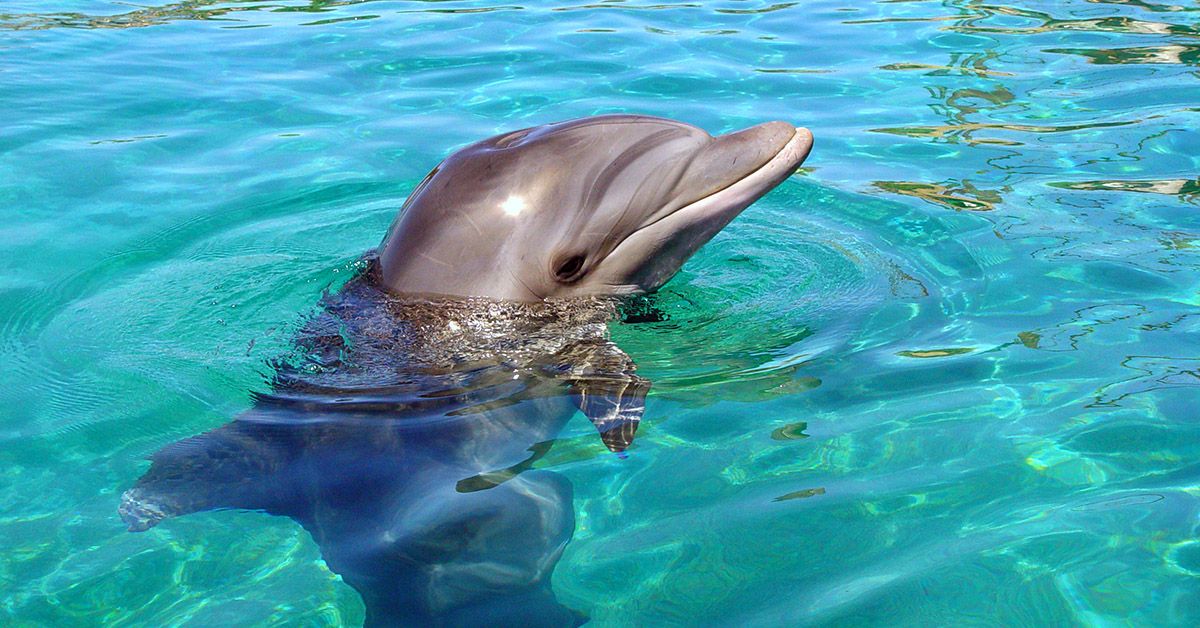Since at least 2006, a video clip has been making the rounds showing dolphins creating and playing with bubble rings. The video was published just one year after YouTube was created. Before the prominence of social media, it was shared by email:
The attached video is of dolphins playing with silver colored rings which they have the ability to make under water to play with. It isn't known how they learn this, or if it's an inbred ability.
The dolphin does a quick flip of its head and a silver ring appears in front of its pointed beak. The ring is a solid, donut shaped bubble about 2-ft across, yet it doesn't rise to the surface of the water. The dolphin then pulls a small silver donut from the larger one. Looking at the twisting ring for one last time a bite is taken from it, causing the small ring to collapse into a thousands of tiny bubbles which head upward towards the water's surface. After a few moments the dolphin creates another ring to play with. There also seems to be a separate mechanism for producing small rings, which a dolphin can accomplish by a quick flip of its head.
An explanation of how dolphins make these silver rings is that they are "air-core vortex rings". Invisible, spinning vortices in the water are generated from the tip of a dolphin's dorsal fin when it is moving rapidly and turning. When dolphins break the line, the ends are drawn together into a closed ring. The higher velocity fluid around the core of the vortex is at a lower pressure than the fluid circulating farther away. Air is injected into the rings via bubbles released from the dolphin's blowhole. The energy of the water vortex is enough to keep the bubbles from rising for a reasonably few seconds of play time.
We don't know the specific origins of this video clip, but bottlenose dolphins' producing and manipulating bubble rings is indeed a real phenomenon that has been observed and described by researchers, as noted in the 2000 article "Bubble Ring Play of Bottlenose Dolphins: Implications for Cognition," published in the Journal of Comparative Psychology:
Ongoing research into the cognitive capabilities of dolphins and other cetaceans has captured the interest and imagination of both the scientific community and the public. Bottlenose dolphins are gregarious mammals that show a strong propensity for play behavior with physical objects and with [each other]. There have been previous reports that both captive and wild dolphins produce their own objects of play, termed "bubble rings". During these events, dolphins expel air from their blowhole, and the expelled air rises to the surface in a torus or ringlike form.
Air-breathing dolphins always produce bubbles when they expel air underwater. Besides bubble rings, dolphins also produce a wide variety of other bubble types. They occasionally emit bubble streams concurrent with vocal activity. When surprised, curious, or excited, dolphins often emit a rapid exhalation termed a "bubble burst". Breathing in dolphins, unlike in other mammals, is solely under voluntary control, a crucial feature in their adaptation to a fully aquatic existence. Whereas the physics of ring formation is straightforward, the actual production of stable rings may require some practice, expertise, and forethought by the dolphins.
Dolphins in different oceanariums have been reported to produce bubble rings. For example, dolphins would swim to the bottom of the pool, stop, assume a horizontal position, and then with a sharp upward jerk of the head, expel a ring of air through their blowhole.
Dolphins frequently manipulate their bubble rings by generating vortices around the objects, which cause the bubble rings to turn vertically by 90° or flip in orientation 180°. Bubble play can result in a sequence of two bubble rings, such that the second bubble ring joins the first bubble ring to form a large bubble ring, which is often then further manipulated. Sometimes a third smaller bubble ring extrudes from the larger ring as a result of the force of impact between the first and second bubble rings. This third bubble ring is frequently manipulated by the dolphins in a similar manner as described above for single rings where the dolphins vertically turn the bubble ring or completely flip the ring.
A 1996 episode of "Noorderlicht" featured Dr. Ken Marten explaining the bubble rings and the intelligence of dolphins. The TV show was a Dutch scientific documentary series. The bubble rings moments begin at 3:59 in the video:
In jest, Marten said that the capabilities of dolphins to perform "hydrodynamic tricks" could qualify them to be "professors of fluid mechanics at a university."

